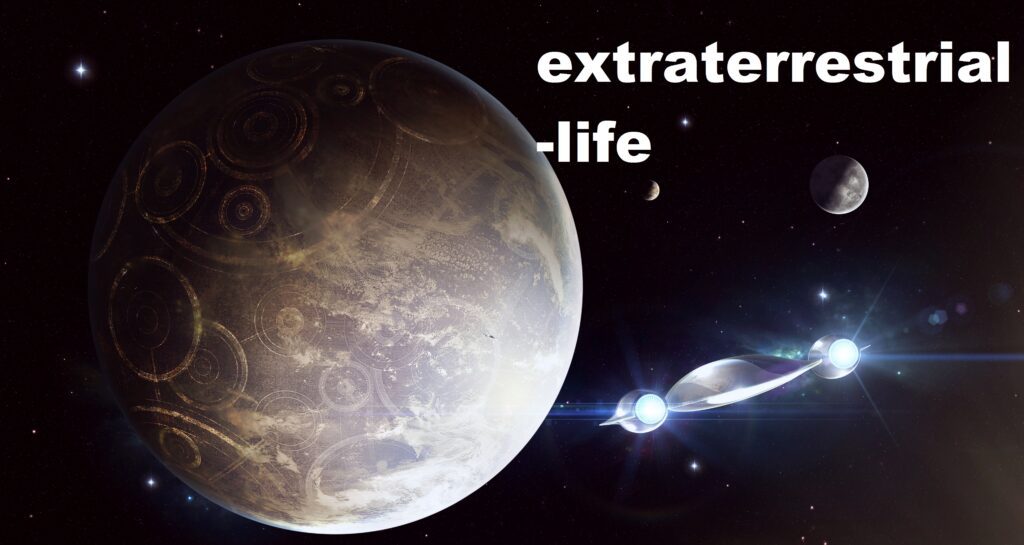Extraterrestrial life, often called alien life, refers to any living organisms that don’t originate from Earth. This encompasses a vast spectrum of possibilities, from simple microbes to complex, intelligent beings far beyond our comprehension.
While we haven’t found definitive proof of extraterrestrial life yet, the search is ongoing and fueled by scientific curiosity and the vastness of the universe. Here’s a breakdown of why the question of extraterrestrial life is so intriguing:

-
Prevalence of planets: With thousands of exoplanets discovered and many more likely out there, the sheer number of potential habitats increases the odds of life existing elsewhere.
-
Ingredients for life: We’re finding the basic building blocks for life, like water and organic molecules, on comets, asteroids, and even some moons.
-
Extremophiles on Earth: Here on Earth, life thrives in incredibly harsh environments, from boiling springs to the bottom of the ocean. This suggests life might be more adaptable than we initially thought.
The search for extraterrestrial life is a multi-pronged approach:
-
Finding habitable exoplanets: Astronomers are constantly searching for Earth-like planets within the habitable zone of their star, where liquid water could exist. The James Webb Space Telescope (JWST) is a powerful tool in this search, as it can analyze exoplanet atmospheres to look for signs of water vapor and other potentially life-supporting molecules.
-
Detecting biosignatures: Biosignatures are chemical signatures in an exoplanet’s atmosphere that could be indicative of biological processes. For instance, the presence of methane and oxygen together might suggest life, as these gases wouldn’t naturally exist in large quantities on a lifeless planet.
-
Looking for intelligent life: The Search for Extraterrestrial Intelligence (SETI) programs use radio telescopes to scan the cosmos for potential signals from advanced civilizations.
The discovery of extraterrestrial life, even in its most basic form, would be a monumental scientific breakthrough. It would essentially alternate our information about the universe and our place inside it.
Extraterrestrial means anything that originates from outside Earth. Here’s a breakdown of your questions about life beyond our planet:
-
This is one of the biggest unanswered questions in science! We haven’t found definitive proof yet, but many scientists believe it’s a strong possibility. Here’s why:
- There are billions of galaxies in the observable universe, each containing billions of stars. With so many stars, it seems statistically probable that some planets could support life.
- We’re finding exoplanets (planets outside our solar system) all the time, and some are in the habitable zone of their star, where liquid water could exist – a key ingredient for life as we know it.
- Even in harsh environments on Earth, we find extremophiles – microbes that thrive in extreme conditions. This suggests life might be more adaptable than we initially thought.
-
This is even more difficult to answer definitively. However, scientists are looking for signs of past life, such as microbial fossils or biosignatures (chemical signatures indicative of biological processes) on Mars, moons like Europa (Jupiter’s moon) and Enceladus (Saturn’s moon), and even potentially in the atmospheres of exoplanets.
Is There life in the space?
-
By “space” in general, we typically refer to the vast emptiness between stars and planets. Due to the harsh radiation and lack of essential elements and conditions, life as we know it is not likely to exist freely floating in space. However, the possibility of life on planets or moons orbiting distant stars is what truly excites scientists.
The search for extraterrestrial life is an ongoing scientific endeavor, and with advancements in technology like the James Webb Space Telescope, we may be closer to finding an answer in the coming years!
